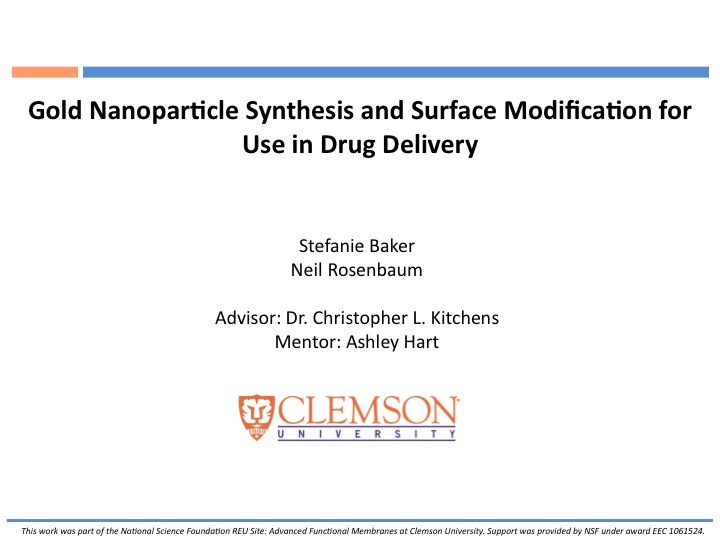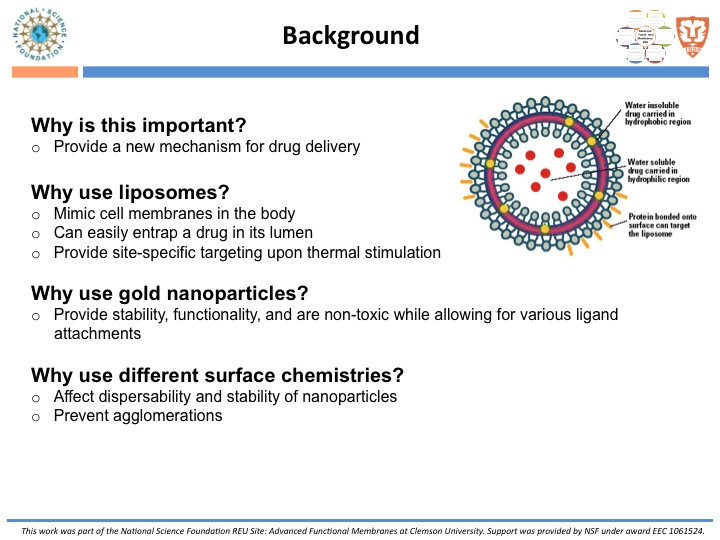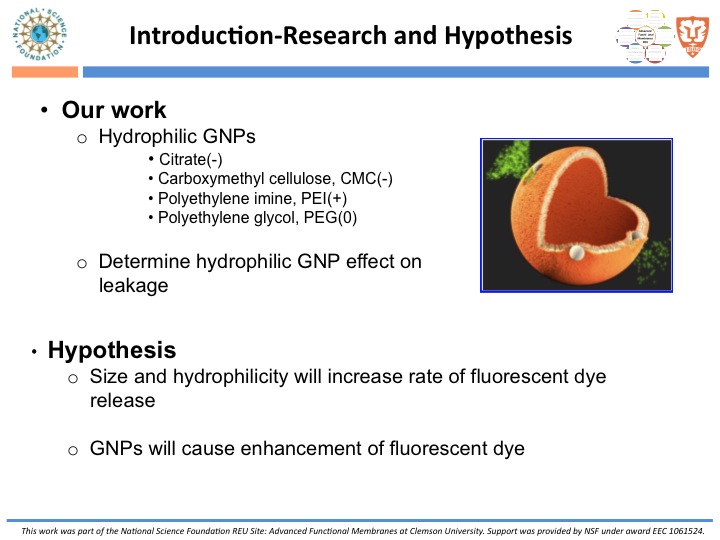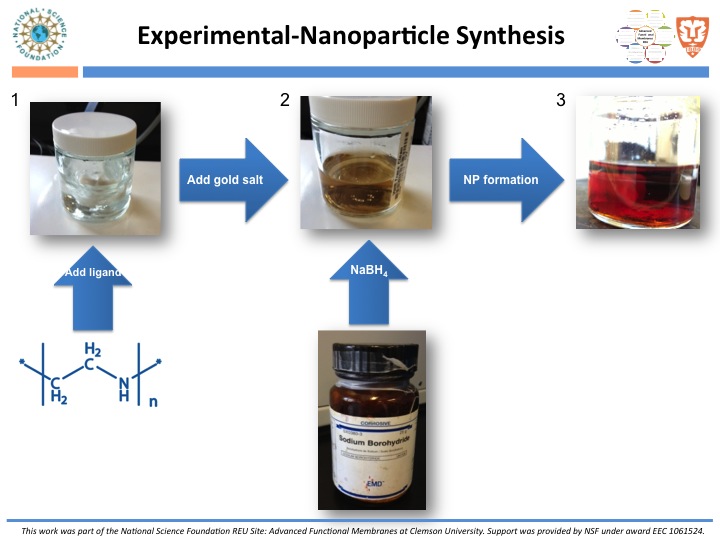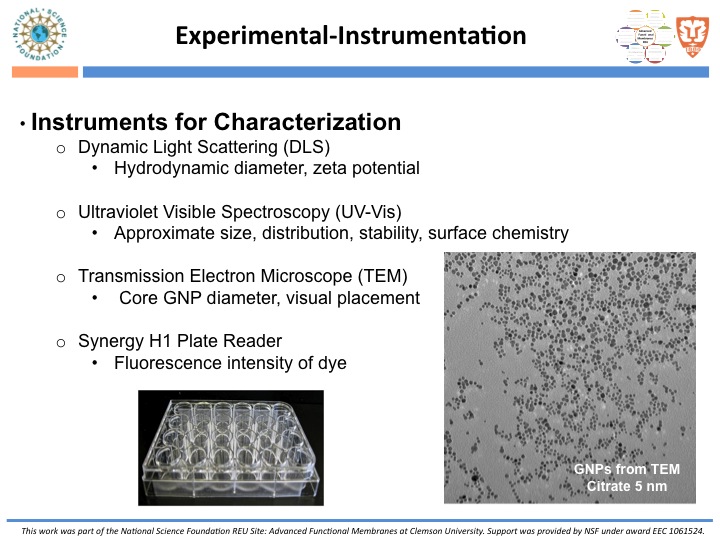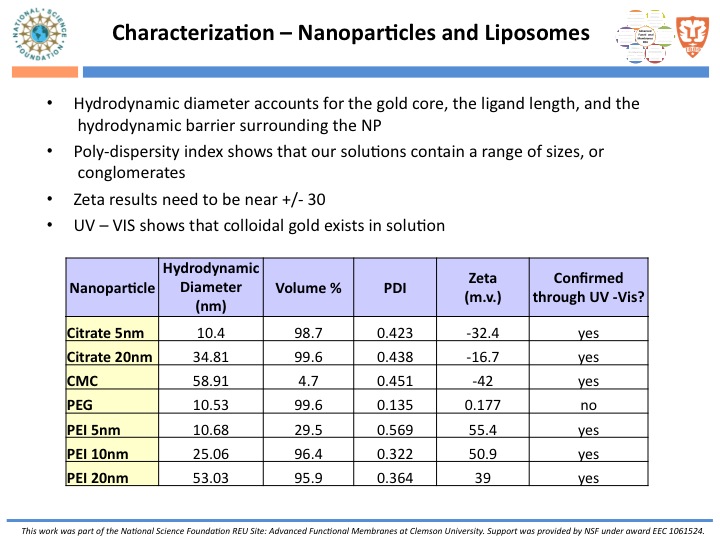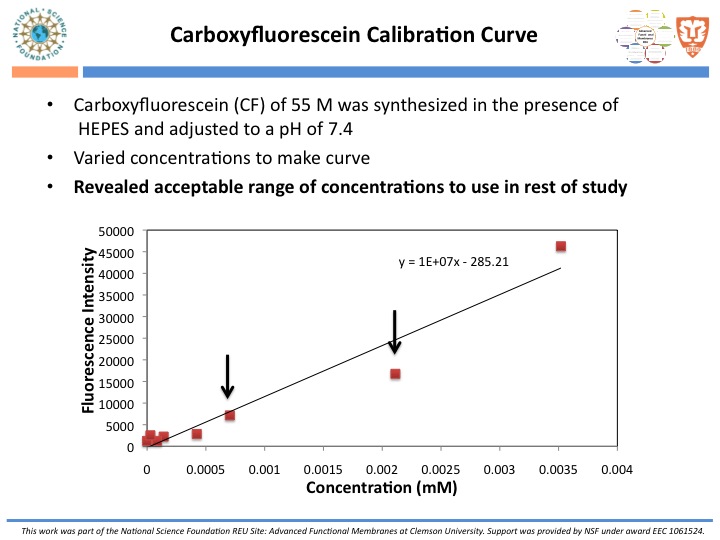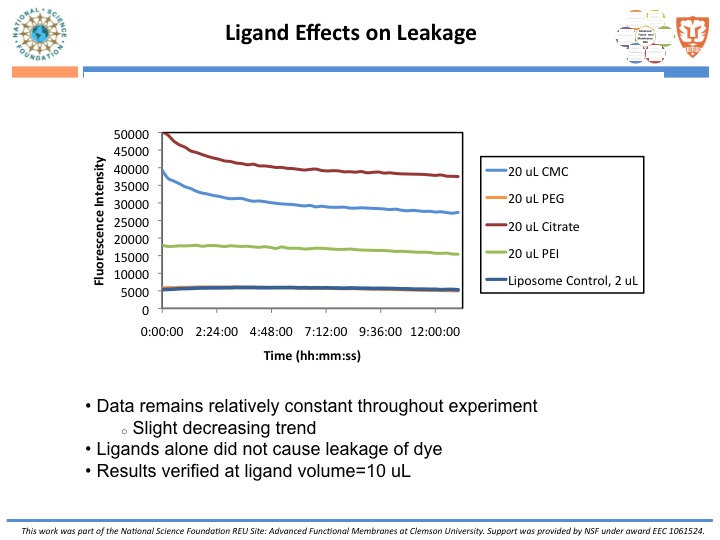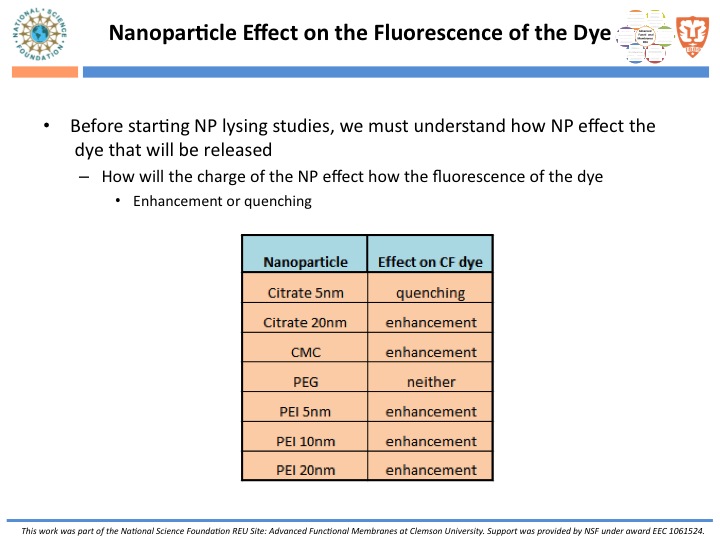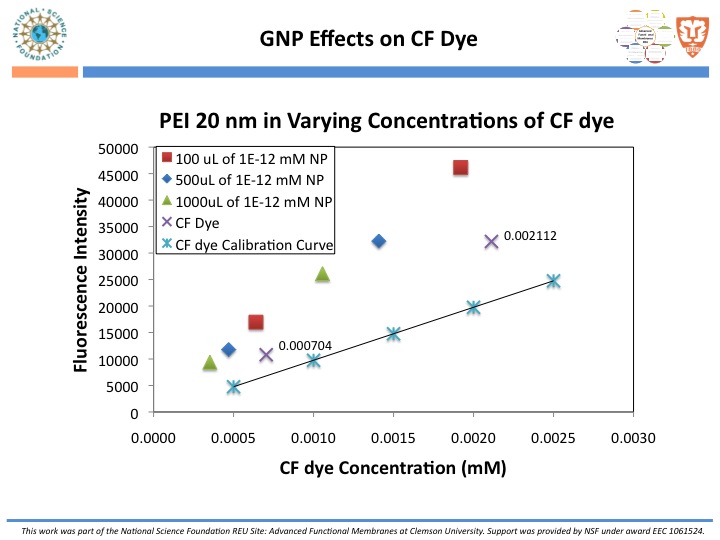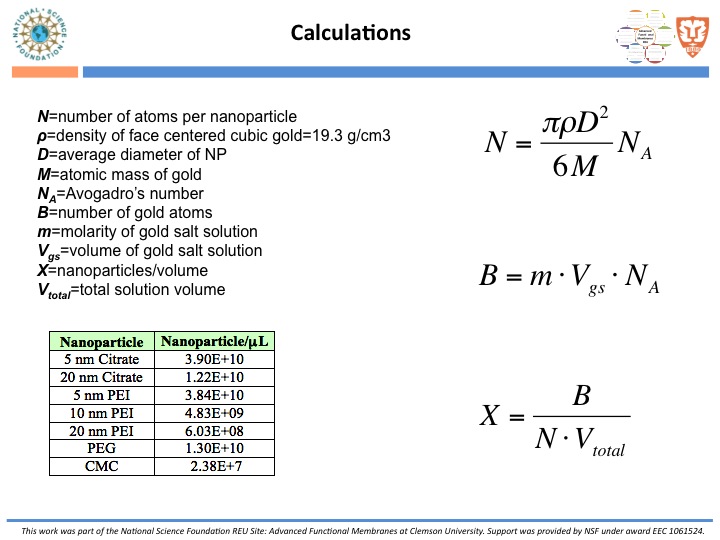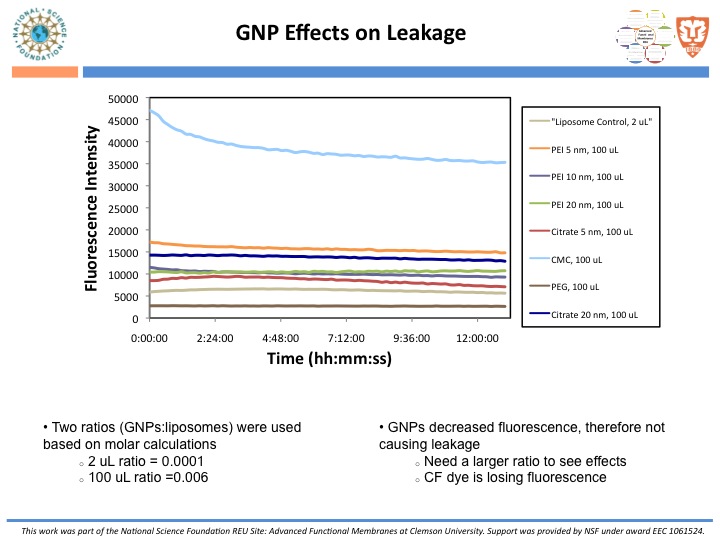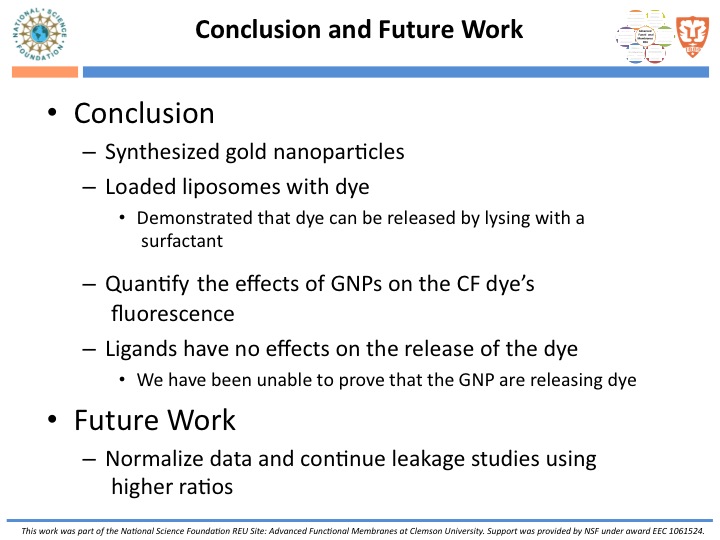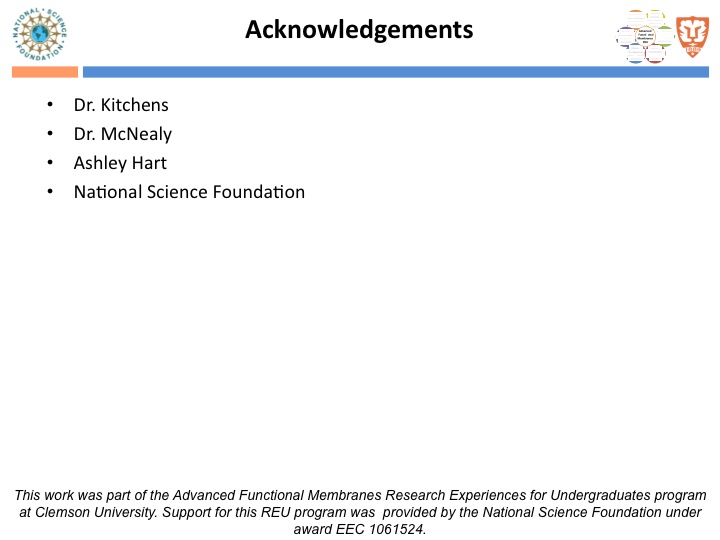Clemson University
Community for the latest research in new membrane materials.
Design of Nanoparticle-liposome Assemblies
as Cell Membrane Analogs for Drug Delivery Applications

Our study describes a hydrophilic nanoparticle drug delivery system that utilizes gold nanoparticles (GNPs) with different ligands in tandem with a particle drug carrier, or phospholipid membrane. The drug delivery will be simulated using a fluorescent dye and measuring the leakage rate of the dye from the lipid vesicle. GNPs are being researched due to their stability, functionality, and negligible toxicity in the body. Previous research in the GNP drug delivery field has seen the use of hydrophobic nanoparticles that are included within the bilayer of the phospholipid membrane, and release the drug when stimulated by irradiation causing the liposome to rupture. This process requires precisely sized GNPs so that the liposomes are not torn apart in the synthesis step. We are using hydrophilic nanoparticles to circumvent the need of including the GNPs within the bilayer as the drug release mechanism. The surface chemistry, or ligand, will impart a charge on the GNP that will interact with the liposome. In this study, we have researched the use of PEI, CMC, Citrate, and PEG ligands for GNP drug delivery mechanisms. Current data shows that hydrophilic nanoparticles are not causing the release of the dye from the DPPC liposomes. More tests will be conducted to verify this new position or to find new support for the previous assertion.
Information
- Design of Nanoparticle-liposome Assemblies
- Poster Sessions1
- Images14
- Last UpdatedJuly 30, 2013 12:58pm EDT

